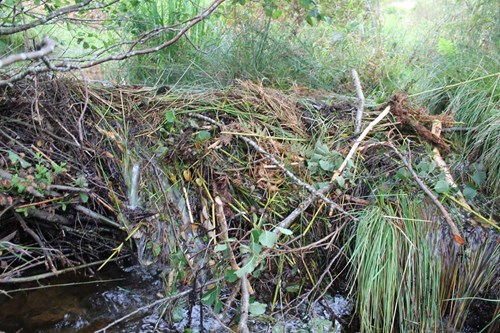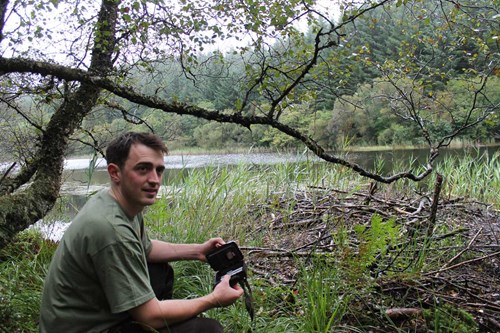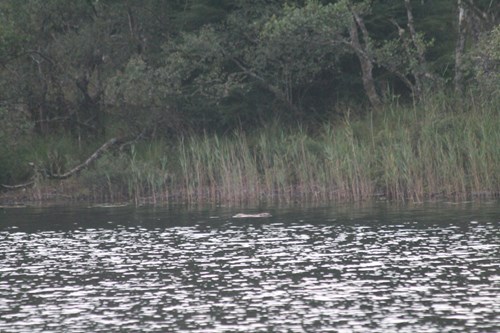RZSS Conservation Blog surveying for beavers in Knapdale
25/09/2016 in Conservation
Recently we embarked on a challenging survey of the beavers in Knapdale to establish not only their current distribution using field signs, but also attempt to identify individuals remaining within the forest. The team consisted of Roisin, formerly RZSS’s Conservation Projects Manager but now a field consultant and beaver expert, three environment staff from Forest Enterprise and myself coordinating our efforts.
The first week we rallied around and delegated sections of watercourses and lochs for each member of the team to go and check for field signs. This method would later inform whether the beavers were present or absent from certain water bodies and where to focus attention to identify individuals. The vegetation was high, midges moderate and ticks bad, all adding to a challenging task!
Luckily we had the weather on our side and this made things a lot better. As the week progressed good field evidence was found and, in a couple of places, we even found signs of activity where beavers had not been seen before.

(Freshly constructed dam in Knapdale)
With the fading light, evening observations become difficult so the use of cameras increased. At any one time up to 18 trail cameras were deployed at known active lodges, dams and feeding stations. Some fresh trails were also set with a trail camera to capture the beavers coming out of the water to feeding grounds.

(Setting a trail camera at the lodge at Loch Buic)
The observations started to come in thick and fast between trail camera footage and direct observations being made by the team. By the start of the second week everyone had seen beavers with the cameras, providing further evidence of both numbers and distribution.

(Photo of Trude at Loch Buic, 5th September 2016)
The best experience I had over the fortnight was during the second week with Jo and John (from Forest Enterprise Scotland’s Environment team). We took the boat out onto Loch Coillie-Bharr for a night observation with the aid of a thermal imaging camera and spotlights. It was one of the calmest nights we had since starting the survey. Thanks to the electric motor on the boat, there was complete silence as we drifted down the large loch, apart from the occasional splash when we changed direction.
About an hour in and Jo had spotted a heat signature on the thermal imager. We made our way over to the heat source which was on the Northern shore of the loch. As we got closer we confirmed that the small heat signature was moving; however, having previously got very excited only to find our heat signature was actually a little grebe (a nice sight in itself but not what we were out to see), we remained cautious.
We finally got within 10 metres and switched the spotlight on – a beaver looked back at us - at first all we could see was a small head with a couple of ears sticking up. As we drifted closer the beaver did not seem phased by our presence and continued to swim slowly along the shore, taking interest in the odd hanging branch. Once we got within a few metres, the loch was so clear that the light penetrated the water, allowing us to see the rest of the beaver’s body. It is then that you appreciate the size of an adult beaver.
This close encounter and the atmosphere of the night will be a great memory for me to take away from the Autumn Knapdale survey. Hopefully the next time we are out there will be with the knowledge that beavers are here to stay and that the Scottish Government decision has gone in their favour.
Ben Harrower
Conservation Programmes Manager
Featured Articles

An update from the Budongo Forest
19/04/2024 in Conservation

Edinburgh Zoo named best zoo in Scotland
15/04/2024 in Edinburgh Zoo

























Follow EZ